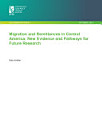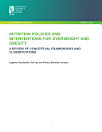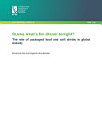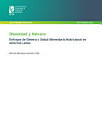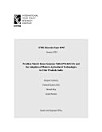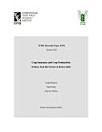Deforestation and agricultural expansion in Brazil’s Amazon and Cerrado biomes: 2000-2024
Mingoti, Rafael · da Silveira, Hilton Luis Ferraz
Sep 2025 · LAC Working Paper Book 39 · Intl Food Policy Res Inst
Ebook
9
Pages
family_home
Eligible
info
reportRatings and reviews aren’t verified Learn More
About this ebook
The Amazon and Cerrado biomes, which together cover nearly two-thirds of Brazil, are critical to global ecological stability but face significant deforestation pressures driven by agriculture and livestock expansion. While the Cerrado, with its savanna-like vegetation, and the dense forests of the Amazon have distinct ecological characteristics, both have been similarly impacted by Brazil's rapid agricultural and infrastructural development. Historically, these biomes were sparsely occupied until the 20th century, when large-scale projects such as the Belém-Brasília and Trans-Amazonian highways facilitated settlement and land conversion. During the 1980s, agricultural frontiers expanded rapidly, especially in the Cerrado. Research by Embrapa introduced advanced soil management techniques and crop adaptation strategies, enabling efficient tropical agriculture and converting native vegetation into productive farmland for crops like soy and corn. In the Amazon, where soils are less fertile, large-scale cattle ranching dominated, leading to the establishment of the infamous "arc of deforestation" along major transport routes.
Rate this ebook
Tell us what you think.
Reading information
Smartphones and tablets
Install the Google Play Books app for Android and iPad/iPhone. It syncs automatically with your account and allows you to read online or offline wherever you are.
Laptops and computers
You can listen to audiobooks purchased on Google Play using your computer's web browser.
eReaders and other devices
To read on e-ink devices like Kobo eReaders, you'll need to download a file and transfer it to your device. Follow the detailed Help Center instructions to transfer the files to supported eReaders.

